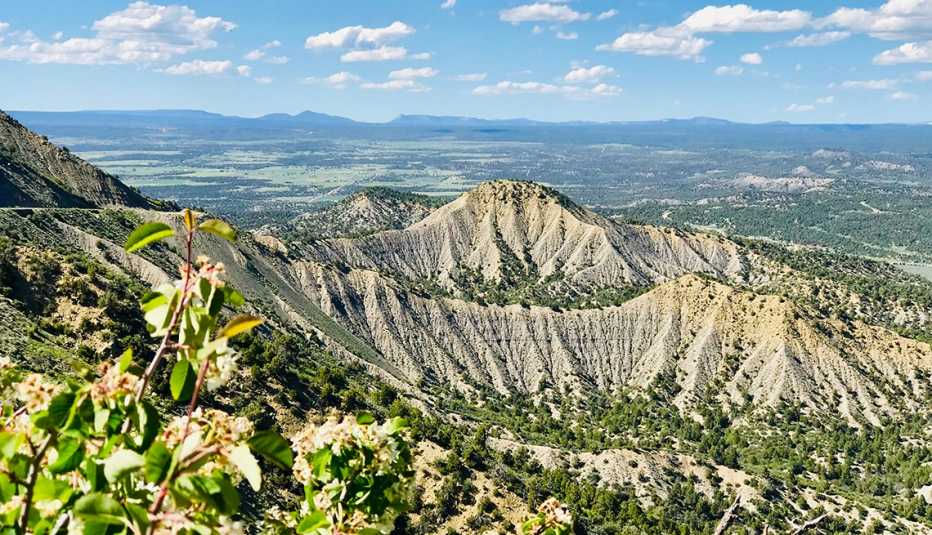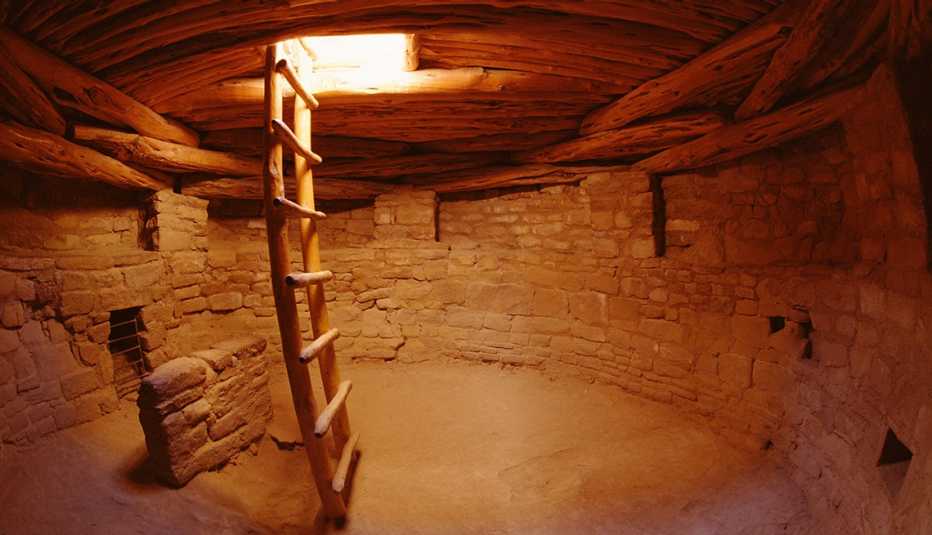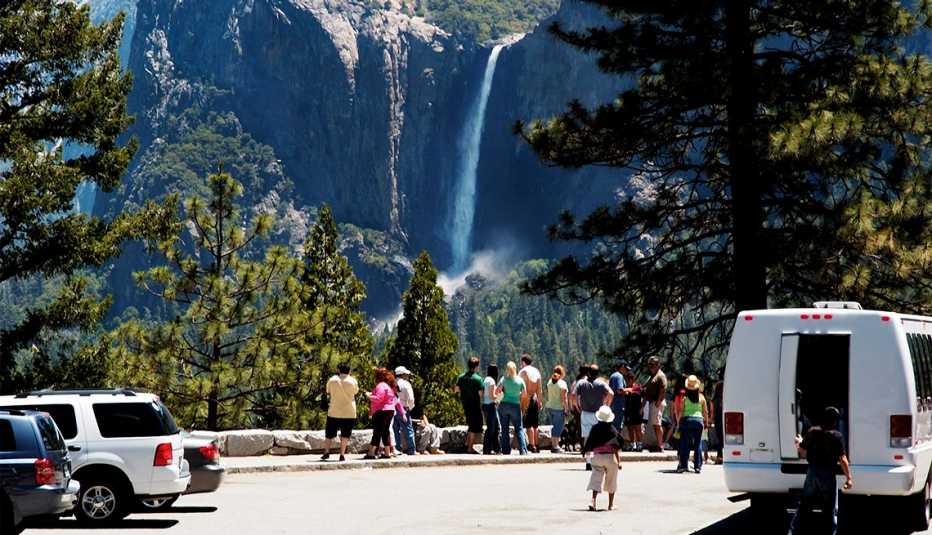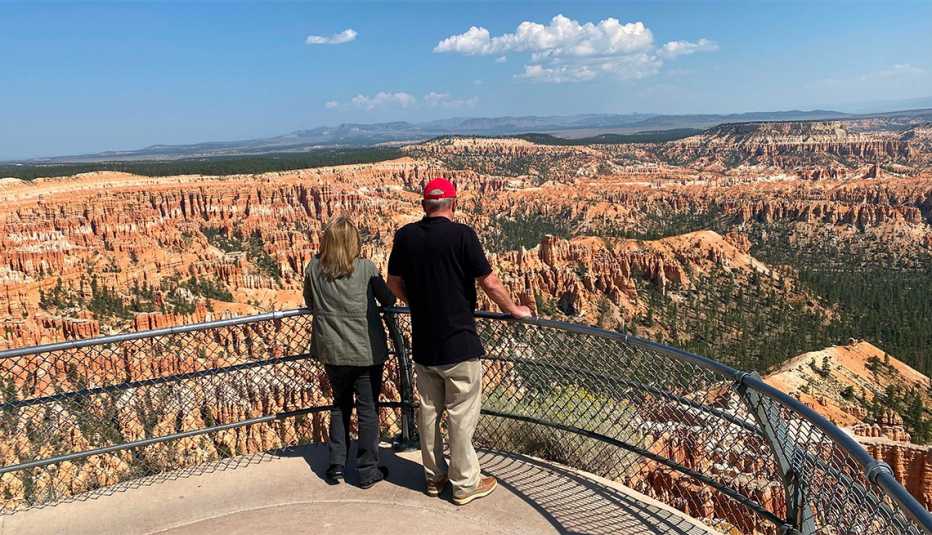AARP Hearing Center
Most of the country’s 63 national parks are beloved for their wild and rugged beauty, but Mesa Verde National Park (MVNP) is a cultural treasure unlike any other. Located in the Four Corners region of southwestern Colorado, it preserves the heritage and hand-built architectural accomplishments of the Ancestral Pueblo people, an ancient civilization that produced awe-inspiring handiwork between 550 and 1300 A.D. Home to 5,000 archaeological sites, including 600 canyon-carved cliff dwellings, the 52,485-acre park, strewn with verdant clusters of pinyon, juniper and Gambel oak trees, safeguards the United States’ largest archaeological preserve.


Facts
Park location: The Four Corners region in southwestern Colorado
Acres: 52,485
Highest peak: Park Point’s Fire Lookout Tower, at 8,572 feet above sea level
Lowest valley: Soda Canyon, about 6,000 feet above sea level
Miles of trails: 20-plus miles over 12 trails
Main attraction: Cliff Palace
Cost: $30 per-vehicle entrance fee May until Oct. 23 ($20 with the annual Seniors Pass), valid for seven consecutive days; $20 per vehicle from Oct. 23 through April
Best way to see it: Ranger-led tours of the cliff dwellings
When to go: May through September, when the park’s most significant sites are open. September has the best weather.
President Theodore Roosevelt established the park in 1906, and in 1978, MVNP was declared a UNESCO World Heritage Site, along with Yellowstone National Park, the first such accreditations given in the United States. The region’s first Spanish explorers gave the area its name — Mesa Verde is Spanish for “green table” — inspired by its vast and lush mountainous shrublands. Geologists will tell you that MVNP is technically a “cuesta” (not a “mesa”), due to its sun-tilted topography, which the Ancestral Puebloans used to grow corn, their primary food.
For reasons unknown, by the late 1200s, following seven centuries of building and harvesting, the Ancestral Puebloans had all but deserted the cliffs, canyons and villages of modern-day MVNP. While there were surely plenty of explorers in the area in the years after, it wasn’t put on the map until a snowy December day in 1888, when local ranchers Charlie Mason and Richard Wetherill spotted Cliff Palace — the largest cliff dwelling in the park and the main attraction. Fast-forward to 2022, and this sacred Indigenous site, where 100-mile views into Arizona, Utah and New Mexico can be had on clear days, attracts close to 600,000 visitors annually.
An interpretive sign in the park offers this plea to visitors from T.J. Atsye, a park ranger and direct descendant of the people who once lived here: “To Pueblo people, this is still a living place. We make pilgrimages back to Mesa Verde to visit the ancestors and gather strength and resilience from them. I ask you to please visit with respect. If you’re genuine, and true, and respectful, the ancestors will welcome you.”
Easy to navigate, MVNP is divided into two distinct sections: Chapin Mesa, which features two short, drivable roads and where parkgoers spend most of their time, and Wetherill Mesa, highlighted by a paved 5-mile walking loop. You won’t need more than a day to experience the park, but to explore its best sites — Cliff Palace, for example — you need to purchase tickets for ranger tours in advance of your arrival.


Plan Your Trip
The nearest international airport is 248 miles southeast in Albuquerque, though it offers no nonstop connections to the area near the park. Flying into Denver International Airport is a better option, with at least one daily nonstop flight to the gateway city of Cortez (10 miles west of the park) and multiple flights to Durango-La Plata County Airport (49 miles east of it), just outside Durango.
Most visitors, however, drive to MVNP as part of an extended road trip that includes stops in Arches and Canyonlands national parks in Utah and other attractions in scenic southwestern Colorado, including national monuments and the San Juan Skyway, a scenic, 236-mile mountain loop through Telluride and other charming former mining towns.
MVNP’s entrance is on the park’s northern edge, directly off U.S. Highway 160, with the lone visitor center nearby. To maximize your day, give yourself 30 minutes at the center to take in its interactive exhibits, small museum, bookstore and gift shop before venturing into the park.
From the entrance, it’s about an hour’s drive on MVNP’s slow and serpentine main thoroughfare to the cliff dwellings at Chapin and Wetherill mesas, in the park’s far southern quadrant. Be sure to stop at the Park Point overlook, MVNP’s highest point (8,572 feet), for scenic views of the San Juan Mountains’ 14,000-foot peaks. You might even spot a golden eagle riding the warm air currents above the Mancos Valley.
The thoroughfare forks at mile marker 15 (near Far View Lodge), with offshoots leading to each of the two mesas. From Far View Lodge, it’s a 5-mile drive to Chapin Mesa’s two loop roads and 12 miles to Wetherill’s loop trail. The road to Wetherill Mesa, the park’s less-visited side, closes at the end of October and reopens in May. Chapin Mesa is open year-round; its cliff dwellings can’t be toured in the winter, but many of the dwellings in both mesas can still be seen from the park’s overlooks.
The season is crucial when planning your trip to MVNP. “April and May are nice, and the temperatures are comfortable, but you can get snow,” says Holly Tatnall, an interpretative guide for park concessionaire Aramark Tours. “September is going to give you the best, most consistent weather in the unpredictable Rockies.”




































































